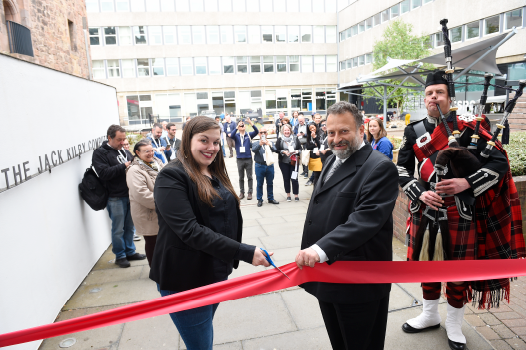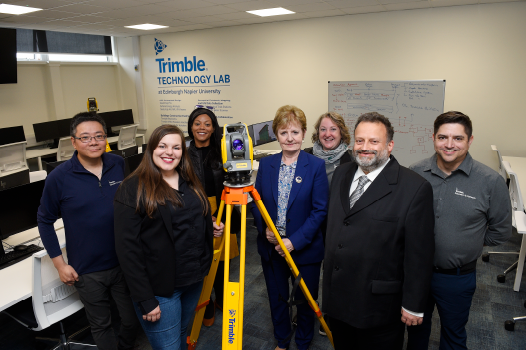
THE expansion of a technology facility at Edinburgh Napier University has been tipped to give the next generation of engineering and construction leaders ‘every chance’ to excel in addressing the construction industry’s 21st century challenges.
Professor Robert Hairstans, head of the university’s Centre for Offsite Construction & Innovative Structures, added that the expanded Trimble Technology lab will help harness technological innovation in the sector.
The expansion builds on an already established relationship between the university and California-based technology firm, Trimble, which looks to ‘cultivate’ a ‘high-trained’ workforce that will drive future innovation.
Students enrolled in Napier’s schools of computing and engineering and environment, which includes architectural technology, civil engineering, and construction management are set to benefit from the expanded facilities – which feature the new Merchiston Campus Lab – which was gifted to the university by Trimble.
It will allow students to enhance their studies with hands-on experience of Trimble solutions – including scanning buildings and sites; design and 3D printing of architectural models; and digital fabrication to implement construction cost estimating and scheduling.
Technology featured in the facilities include the Trimble XR10 HoloLens with hardhat; Trimble robotic and mechanical total stations; and a Trimble TX8 3D Laser Scanner. Advanced software solutions include RealWorks scanning software; Trimble Business Center; Tekla Structures; Tekla Structural Design Suite; Sefaira Energy Analysis; Trimble Connect; and the company’s ‘popular’ 3D modeling software, SketchUp.

The new facilities have been showcased over the past three days to over 50 ‘leading’ construction, geospatial, and natural resource academics from around the world who visited the facilities for the Trimble Technology Lab Conference. The event featured knowledge exchange and global community building, through the sharing of best practice for teaching and using advanced technologies.
Amy Northcutt, director of education and outreach at Trimble, commented, “Our collaboration with Edinburgh Napier University is impactful. The shared focus on education and sustainability aligns with Trimble’s mission of transforming the way the world works. Scotland is no stranger to important conversations around climate action and sustainability, which is why we’re so excited to bring together thought leaders from around the world who are equipped with Trimble technology to ideate and collaborate on empowering the future leaders of our industries.”
Professor Andrea Nolan, principal and vice chancellor of Edinburgh Napier University, added, “We are honoured to be continuing to grow our ground-breaking work with Trimble to extend our Trimble Technology Laboratory facilities, as well as host the inaugural Trimble Technology Lab Conference.
“As home of difference makers, welcoming leading academics from around the globe to Edinburgh Napier celebrates how we strive to support our students with the best ideas and tools to help them design and build the decarbonised future built environment we all need.”
Professor Robert Hairstans, head of Edinburgh Napier’s Centre for Offsite Construction & Innovative Structures, said, “We are already seeing the tremendous benefit partnering with Trimble makes to Edinburgh Napier students, whether it is using hardware to showcase their new ideas for our human habitats at COP26, to reimagining and rebuilding schools and university campuses to achieve net zero using biogenic materials like timber.
“With the new Trimble Technology Lab facilities ready for action. The next generation of engineering and construction leaders will have every chance to excel in addressing the construction industry’s 21st century challenges by harnessing technological innovation. Tech tools that help professionals to increase productivity and decarbonise the built environment.”








